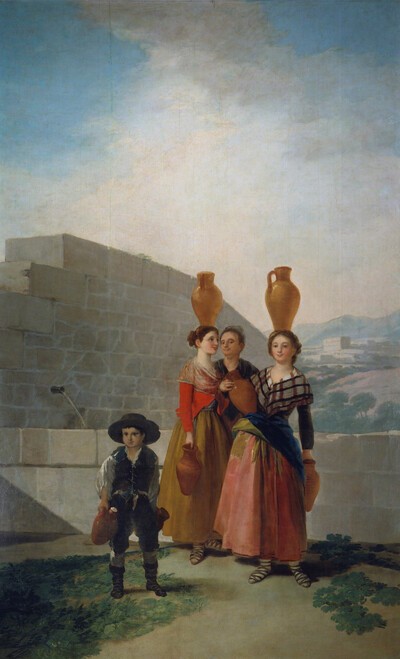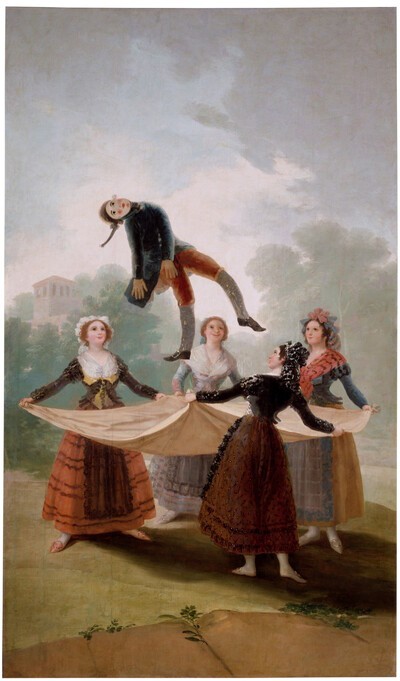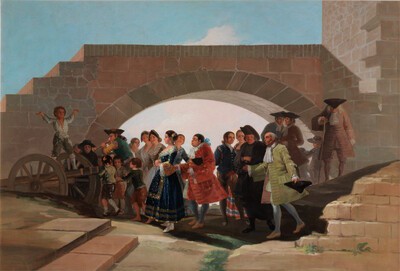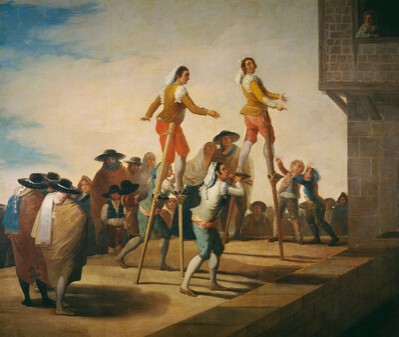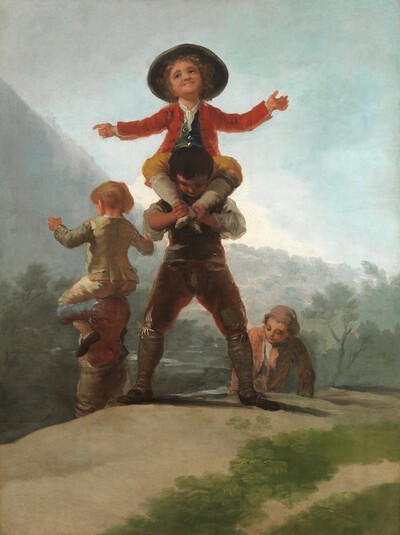- Cronología
- 1791 - 1792
- Ubicación
- Philadelphia Museum of Art, Philadelphia, United States
- Dimensiones
- 82.4 x 163.2 cm
- Técnica y soporte
- Oil on canvas
- Reconocimiento de la autoría de Goya
- Documented work
- Titular
- Philadelphia Museum of Art
- Ficha: realización/revisión
- 27 Dec 2009 / 14 Jun 2023
- Inventario
- 1975-150-1
- Otros títulos:
-
Children with a See-Saw (Los niños del balancín)
See The Wedding.
Around 1856 or 1857, this cartoon was taken from the Royal Tapestry Factory to the Royal Palace in Madrid. In 1870 the tapestry cartoons that were in the basements of the palace were moved to the Prado Museum, back then known as the Painting and Sculpture Museum. It was then that six cartoons by Goya were discovered to be missing, including the one before us (see Children with a Cart). This cartoon disappeared without a trace for many years until, in 1975, it entered the collection of the Philadelphia Museum of Art from a private collection. It was donated by Anna Warren Ingersoll.
The See-Saw is an overdoor piece, the companion of Boys Climbing a Tree and Chicken Fights.
Some children are playing on an improvised see-saw made from two crossed logs. We can make out five figures: those at either end of the log, a third who is in front of them, crying, and in the background two more in conversation. The differences between the two children on the see-saw are obvious. Their distinct social positions are reflected in their clothing: the one on the left is dressed in an elegant yellow suit and perfect silk socks, whilst the other is wearing more modest clothes, and - as an additional symbol of his impoverishment - even his sock has slipped down. What is more, the wealthier child has his feet on the ground and is in control of the see-saw, his arms flung up in joy, whilst his playmate is suspended in the air with a scared look on his face, holding on for dear life.
Tomlinson has seen in several of the cartoons in this series a figurative representation of political instability and luck, this latter so fickle that no sooner does she lift you up to the top than she is flinging you back down to earth.
-
L'œuvre peint de Goya. 4 volsParís1928-1950vol. I, p. 99, cat. 40
-
Tapices de GoyaMadridPatrimonio Nacional1946pp. 150, 170, 172, 277, cat. 61 y lám. 1
-
Vie et ouvre de Francisco de GoyaParísOffice du livre1970pp. 100, 374, cat. 306
-
BarcelonaPolígrafa1970vol. I, p. 283, cat. 306
-
L’opera pittorica completa di GoyaMilanRizzoli1974p. 105, cat. 262
-
Francisco de Goya, 4 vols.ZaragozaCaja de Ahorros de Zaragoza, Aragón y Rioja1980-1982vol. II, p. 90
-
Francisco de Goya, cartones y tapicescol. col. "Espasa Arte"Espasa Calpe1987pp. 61, 170, 318, cat. 66C
-
Francisco de Goya. Los cartones para tapices y los comienzos de su carrera en la corte de Madridcol. col. "Ensayos de Arte Cátedra"MadridCátedra1987pp. 250-254 y p. 249 (il.)
-
Goya en Madrid. Cartones para tapices 1775-1794MadridMuseo Nacional del Prado2014p. 208


